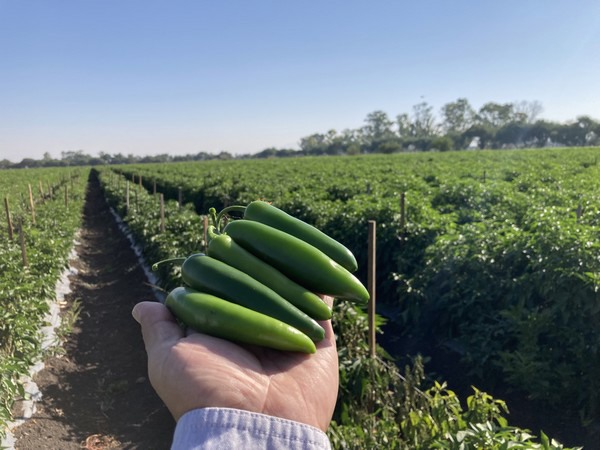 In recent years, consumption of hot peppers has been impacted in a positive way due to breeding focusing on heat units. Increased heat has resulted in hot pepper challenges with many having gone viral. “For years, there was a trend of hot peppers not containing the heat units from the past or that punch consumers tend to expect,” says Salvador Hurtado, Warm Crops Senior Product Manager with Sakata Seed. “In the past 10 years, it has been our focus to develop varieties that have the heat units the consumer is looking for, along with a nice shelf life. Since that is what consumers are expecting, the hot pepper train is now reaching every demographic of the market and consumption is on the rise.”
In recent years, consumption of hot peppers has been impacted in a positive way due to breeding focusing on heat units. Increased heat has resulted in hot pepper challenges with many having gone viral. “For years, there was a trend of hot peppers not containing the heat units from the past or that punch consumers tend to expect,” says Salvador Hurtado, Warm Crops Senior Product Manager with Sakata Seed. “In the past 10 years, it has been our focus to develop varieties that have the heat units the consumer is looking for, along with a nice shelf life. Since that is what consumers are expecting, the hot pepper train is now reaching every demographic of the market and consumption is on the rise.”
Desired traits
It's not just the consumer who has expectations. Growers also look for certain traits in a variety. “Depending on what’s hot in the market, they are looking for varieties that have a high yield and can face the challenges they have in their backyard,” said Hurtado. “These challenges range from disease resistance to setting in hot conditions, but a good window for pricing is also key. We work hard to develop varieties that are adaptable and meet the demands of our growers. The standards are high, and we work diligently to meet their expectations.”
 New variety Pathfinder.
New variety Pathfinder.
New varieties
Two relatively new varieties, Pathfinder and Chaak, display and demonstrate Sakata’s breeding efforts. “Pathfinder has great yields, heat units, shelf life, as well as disease resistance. These traits have made the variety an easy choice for growers.” In addition, its deep green color makes it suitable for the US/export market. “It’s a pepper that takes growers and consumers down the path of excellence,” Hurtado added. The other new variety, Chaak, is favored for its disease resistance package along with an earliness that no other habanero pepper has been able to match yet. “Additionally, it has an amazing tolerance to cracking and the orange color intensifies, even after harvest.”
 New variety Chaak.
New variety Chaak.
Breeding dual purpose varieties
Not only does Sakata breed for the fresh market, the company considers itself a leader in the dehydrating market. “Our breeding program focuses on developing dual purpose varieties that serve the fresh and dehydrating markets at the same time. Although our product line leads the dehydrating market, focusing on dual purpose varieties can be beneficial for some varieties that we are utilizing for the fresh market,” Hurtado mentioned.
“Many of the traits that make a dehydrating market hot pepper extraordinary, are great for the fresh market as well. These include extended shelf life, thick walls, heat units, as well as resistances.” An example is Poblano Sargento. “It probably has the best fresh-to-dry ratio a poblano can achieve. In addition, it makes an excellent variety in the fresh segment as the walls are dense. Strong plants in combination with a resistance to Pc (Phytophthora crown and root rot) allow Poblano Sargento to be a great choice,” Hurtado said.
Within the Guajillo segment, Cardenal is another example of a hot pepper that has good yields but is also resistant to disease and has the right quality for the dehydrating segment.
 Poblano Sargento variety.
Poblano Sargento variety.
 For more information:
For more information:
Salvador Hurtado
Sakata Seed
Tel: (+1) 408-695-1079
[email protected]
www.sakata.com










